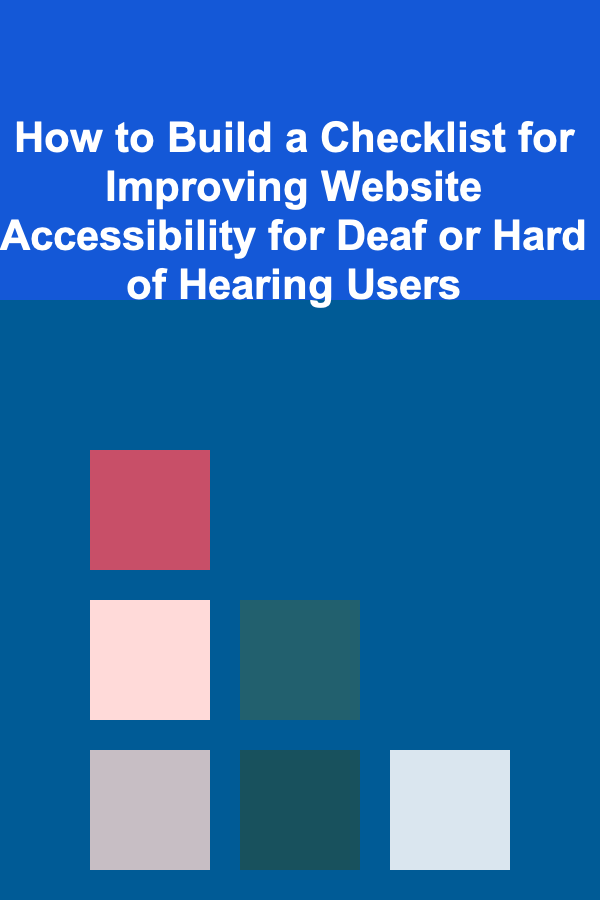
How To Improve Your Vocal Range and Power
ebook include PDF & Audio bundle (Micro Guide)
$12.99$10.99
Limited Time Offer! Order within the next:

Expanding your vocal range and increasing vocal power are goals shared by many singers, regardless of their genre or experience level. Whether you're a seasoned professional or just starting to explore your voice, understanding the mechanics of singing and applying effective techniques can lead to significant improvements. This article delves into the multifaceted approach required to enhance your vocal abilities, covering everything from understanding vocal anatomy to advanced training methods and the importance of vocal health.
Understanding the Voice: Anatomy and Function
Before embarking on a journey to improve your vocal range and power, it's crucial to understand the fundamental components that make up the singing voice. The voice is not a single entity but a complex interplay of various physical systems working in harmony. Key elements include:
- The Larynx (Voice Box): This houses the vocal cords (or vocal folds), which vibrate to produce sound. The size and tension of these cords determine the pitch of your voice.
- The Diaphragm: This is a large, dome-shaped muscle at the base of the lungs. It's the primary muscle responsible for breathing, and proper diaphragmatic breathing is essential for singing.
- The Lungs: These provide the air that fuels the voice. Control over airflow is critical for sustained notes and dynamic control.
- The Resonators: These are the cavities in the head and chest that amplify and shape the sound produced by the vocal cords. The resonators include the pharynx (throat), mouth, nasal cavity, and chest cavity.
- The Articulators: These include the tongue, lips, teeth, and soft palate, which shape the sound into words. Clear and precise articulation is vital for effective communication.
Understanding how these components work together provides a solid foundation for targeted practice and technique development. It allows you to identify areas of weakness and tailor your training to address specific needs.
The Foundation: Proper Breathing Techniques
Breath control is arguably the most important aspect of singing. Without adequate and controlled airflow, you won't be able to sustain notes, project your voice, or maintain vocal health. The key is diaphragmatic breathing, often referred to as "belly breathing."
Diaphragmatic Breathing
This technique involves using the diaphragm to draw air deep into the lungs, allowing the abdomen to expand. This is more efficient than shallow chest breathing, which relies primarily on the rib cage and can lead to tension and fatigue.
How to practice diaphragmatic breathing:
- Lie on your back with your knees bent and feet flat on the floor.
- Place one hand on your chest and the other on your abdomen.
- Inhale slowly through your nose, focusing on expanding your abdomen while keeping your chest relatively still.
- Exhale slowly through your mouth, drawing your abdomen inward.
- Repeat this exercise for several minutes, focusing on maintaining a smooth and controlled airflow.
Breathing Exercises for Singers
Once you're comfortable with diaphragmatic breathing, you can incorporate exercises that specifically target breath control for singing:
- Sustained "S" Sound: Inhale deeply and then exhale slowly while making a continuous "s" sound. Focus on maintaining a steady and even airflow for as long as possible. Gradually increase the duration as you improve.
- Counting on One Breath: Inhale deeply and then count aloud on one breath. Start with a small number and gradually increase it as you gain control over your airflow.
- Staccato "Ha" Exercises: Inhale deeply and then exhale in short, sharp bursts, making a "ha" sound. This helps develop control over the diaphragm and improve vocal articulation.
Expanding Your Vocal Range: Vocal Exercises and Techniques
Vocal range refers to the span of notes you can sing comfortably and accurately. Expanding your range requires consistent practice and targeted exercises that gradually challenge your vocal cords.
Warming Up Your Voice
Before attempting any vocal exercises, it's crucial to warm up your voice. Just like athletes warm up their muscles before a workout, singers need to prepare their vocal cords to avoid strain and injury. Warming up should include gentle exercises that gradually increase the range and intensity of your voice.
Examples of vocal warm-up exercises:
- Lip Trills (Bubbles): This involves gently vibrating your lips while humming or singing a simple melody. Lip trills help relax the vocal cords and improve breath support.
- Tongue Twisters: These exercises improve articulation and vocal agility. Start with simple tongue twisters and gradually progress to more challenging ones.
- Humming Scales: Humming scales helps warm up the vocal cords and improve resonance. Start with a comfortable pitch and gradually increase the range.
- Sirens: This exercise involves gliding smoothly from a low pitch to a high pitch and back down. Sirens help stretch the vocal cords and improve flexibility.
Vocal Exercises for Range Expansion
Once your voice is warmed up, you can begin working on exercises specifically designed to expand your vocal range. These exercises should be performed gradually and consistently, paying close attention to your vocal health and avoiding any strain.
- Scales: Singing scales is a fundamental exercise for improving vocal range and pitch accuracy. Start with simple scales and gradually progress to more complex patterns. Focus on maintaining a consistent tone and avoiding any breaks in your voice.
- Arpeggios: Arpeggios are similar to scales but involve singing the notes of a chord in sequence. Arpeggios help improve vocal agility and coordination.
- Octave Slides: This exercise involves sliding smoothly between two notes an octave apart. Octave slides help stretch the vocal cords and improve flexibility.
- Vocal Fry Exercises: (Caution: Do these exercises gently and sparingly) These can help access lower ranges. Find the lowest note you can make and gently slide between that and a slightly higher note. Done incorrectly, vocal fry can be damaging. Seek guidance from a vocal coach.
- Reaching Higher Notes: Work with vowel sounds like "oo" and "ee" on ascending scales to open up the higher register. Proper head voice placement is essential.
Understanding Vocal Registers
The voice is divided into different registers, which are distinct areas of vocal production with different tonal qualities. The most common registers are:
- Chest Voice: This is the lower register, characterized by a rich, full sound.
- Head Voice: This is the higher register, characterized by a lighter, brighter sound.
- Mixed Voice: This is a blend of chest and head voice, allowing singers to access higher notes with more power and control.
- Falsetto: This is a high, breathy register that is primarily used by male singers.
Understanding your vocal registers is crucial for developing a balanced and consistent voice. Aim to develop a seamless transition between registers, avoiding any noticeable breaks or shifts in tone.
Developing Vocal Power: Resonance and Projection
Vocal power is not simply about singing loudly; it's about producing a resonant and projected sound that fills the room. Developing vocal power requires understanding and utilizing the resonators in your body to amplify and enhance your voice.
Resonance
Resonance refers to the way sound vibrates and amplifies within the cavities of your head and chest. By manipulating these cavities, you can significantly alter the tone and projection of your voice.
Techniques for improving resonance:
- Open Throat: Maintaining an open throat allows the sound to resonate freely. Avoid any tension in the throat muscles. Imagine you are yawning slightly.
- Proper Posture: Good posture is essential for optimal resonance. Stand tall with your shoulders relaxed and your chest open.
- Vowel Modification: Different vowel sounds resonate in different areas of the body. Experiment with vowel modifications to find the optimal resonance for each note. For example, modifying an "ah" sound toward "aw" can improve resonance in the upper register.
- Focusing the Sound: Direct the sound forward, towards your audience. Imagine you are projecting your voice across the room. Avoid pushing the sound just from your throat.
Projection
Projection refers to the ability to direct your voice so that it can be heard clearly by everyone in the audience. Effective projection involves using your breath support and resonance to amplify your voice without straining your vocal cords.
Techniques for improving projection:
- Breath Support: Strong breath support is essential for effective projection. Use diaphragmatic breathing to maintain a steady and controlled airflow.
- Articulation: Clear and precise articulation is crucial for ensuring that your words are understood. Enunciate each word carefully, paying attention to the consonants.
- Dynamic Control: Vary your volume and intensity to add expression and interest to your performance. Avoid singing at a constant volume, which can be monotonous.
- Connecting with the Audience: Visualizing your audience and connecting with them emotionally can help you project your voice with greater confidence and conviction.
Practice Strategies and Consistency
Improving your vocal range and power requires consistent practice and a structured approach. There's no magic bullet; it's about putting in the time and effort to develop your technique and build vocal strength.
Setting Realistic Goals
Start by setting realistic goals for yourself. Don't expect to become a virtuoso overnight. Focus on making small, incremental improvements over time. Celebrate your progress and don't get discouraged by setbacks.
Creating a Practice Schedule
Establish a regular practice schedule and stick to it as much as possible. Consistency is key. Even short, focused practice sessions are more effective than infrequent, lengthy sessions.
Recording Yourself
Recording yourself singing is a valuable tool for identifying areas of weakness and tracking your progress. Listen critically to your recordings and identify areas where you can improve. Don't be afraid to seek feedback from a vocal coach or other experienced singers.
Analyzing Your Performance
Don't just sing; analyze your performance. Are you maintaining proper posture? Is your breath support consistent? Are you using your resonators effectively? By critically evaluating your technique, you can identify areas that need improvement.
Patience and Persistence
Developing your voice takes time and patience. Don't get discouraged if you don't see results immediately. Keep practicing, keep learning, and keep pushing yourself to improve. With persistence, you will eventually reach your goals.
Vocal Health and Maintenance
Vocal health is paramount for any singer. Without proper care, you risk damaging your vocal cords and compromising your ability to sing. Prioritize your vocal health by following these guidelines:
Hydration
Stay well-hydrated by drinking plenty of water throughout the day. Hydration keeps your vocal cords lubricated and flexible.
Avoiding Irritants
Avoid irritants such as smoke, alcohol, and caffeine, which can dry out and irritate your vocal cords. Also, be mindful of allergens that might affect your sinuses and, consequently, your vocal quality.
Rest and Recovery
Get adequate rest to allow your vocal cords to recover from strenuous use. Avoid overusing your voice, especially when you're feeling tired or unwell.
Proper Diet
Maintain a healthy diet rich in fruits, vegetables, and whole grains. Avoid foods that are known to cause acid reflux, which can irritate your vocal cords.
Vocal Rest
When you're experiencing vocal fatigue or hoarseness, give your voice a rest. Avoid speaking or singing until your voice has recovered. Sometimes complete silence is needed.
Seeking Professional Help
If you experience persistent vocal problems, such as hoarseness, pain, or difficulty singing, consult a qualified ear, nose, and throat (ENT) doctor or a speech-language pathologist. They can diagnose any underlying conditions and recommend appropriate treatment.
The Importance of a Vocal Coach
While self-study can be beneficial, working with a qualified vocal coach is highly recommended. A vocal coach can provide personalized instruction, identify and correct bad habits, and guide you towards achieving your vocal goals.
Benefits of Working with a Vocal Coach
- Personalized Instruction: A vocal coach can tailor their instruction to your specific needs and goals.
- Technique Correction: A vocal coach can identify and correct technical flaws that you may not be aware of.
- Vocal Health Guidance: A vocal coach can provide guidance on vocal health and help you avoid injury.
- Performance Enhancement: A vocal coach can help you improve your stage presence and performance skills.
- Motivation and Support: A vocal coach can provide motivation and support to help you stay on track with your goals.
Finding the Right Vocal Coach
When choosing a vocal coach, consider their qualifications, experience, and teaching style. Look for a coach who is knowledgeable, patient, and supportive. Schedule a trial lesson to see if their teaching style is a good fit for you.
Advanced Techniques and Considerations
Once you've mastered the fundamentals, you can explore more advanced techniques to further refine your vocal skills.
Belting
Belting is a technique that allows singers to access high notes with a powerful, chest-voice-like sound. Belting requires strong breath support, proper vocal cord closure, and careful control of resonance. This should be approached with caution and expert guidance.
Vibrato Control
Vibrato is a natural oscillation in pitch that adds warmth and expression to the voice. Learning to control your vibrato can enhance your vocal artistry. Too much or too little vibrato can detract from the sound.
Improvisation
Improvisation is the ability to create melodies and harmonies spontaneously. Developing improvisation skills can enhance your musicality and creativity.
Performance Techniques
Performance techniques encompass a range of skills that enhance your stage presence and connect with your audience. These include body language, eye contact, and stage movement.
Conclusion: A Journey of Continuous Improvement
Improving your vocal range and power is a continuous journey that requires dedication, perseverance, and a commitment to vocal health. By understanding the mechanics of singing, practicing consistently, and seeking guidance from experienced professionals, you can unlock your full vocal potential and achieve your singing goals. Remember to be patient, be kind to your voice, and enjoy the process of learning and growing as a singer. Embrace the challenges, celebrate the victories, and never stop striving to improve. The possibilities are endless, and the rewards are immeasurable.
Finally, always listen to your body. If something feels painful or strained, stop immediately and rest. Don't push yourself too hard, especially when you are just starting out. The key is to be consistent and patient, and to always prioritize your vocal health.
This information is for general knowledge and informational purposes only, and does not constitute medical or professional advice. It is essential to consult with a qualified vocal coach, medical professional, or other healthcare provider for personalized guidance and treatment related to your vocal health.

How to Avoid Lifestyle Inflation and Stick to Your Financial Goals
Read More
How to Build a Checklist for Improving Website Accessibility for Deaf or Hard of Hearing Users
Read More
How to Capture Every Moment: Wedding Photography and Videography
Read More
How to Save for a New Car Within Your Home Budget
Read More
How To Wear Sequins Beyond New Year's Eve
Read More
How To Discover Engaging Mystery and Thriller Series
Read MoreOther Products

How to Avoid Lifestyle Inflation and Stick to Your Financial Goals
Read More
How to Build a Checklist for Improving Website Accessibility for Deaf or Hard of Hearing Users
Read More
How to Capture Every Moment: Wedding Photography and Videography
Read More
How to Save for a New Car Within Your Home Budget
Read More
How To Wear Sequins Beyond New Year's Eve
Read More